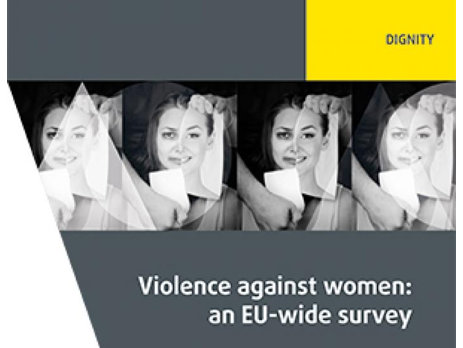My to-read pile has always contained large reports on it, with line after line of increasingly dismal statistics, often peppered with heartbreaking testimonies from women survivors and more often than not stories of violence where the women involved are not alive to tell them.
The pan-European report about the extent of violence against women in the European Union that was released this week was not that different but I was struck by the media reaction to it. It was celebrated as revelatory and spoken of as the thing that was needed to ensure action was taken to end violence against women.
This startled me because, as far I was concerned the report did not name the problem, the articles in praise of the report did not name the problem, and countless government strategies do not name the problem. They do not say what for many is obvious when discussing protecting women, that we need to talk about male violence.
I can already hear tea spluttering onto keyboards across the land as the usual suspects leap onto Twitter to tell me what a sexist I am. But by pretending that the fact the vast majority of violence committed against women and indeed against men is not committed by men we are destined to be forever looking at picking up the pieces, not stopping the harm.
In not looking at the causes of violence we do a disservice to women and men.
First, to discuss male violence is not to say that all men are violent – that is an approach that is not only reductive but dangerous, but it does require us to ask why in our society men are more likely to commit acts of violence than women. It requires us to ask why the image of a successful man is one of a man with power? Why men are told that physical prowess is a key indicator of how well they are doing at ‘being a man’? Why punches thrown in the playground is just ‘boys being boys’?
It also requires us to ask, if men are told that is how they will succeed, what are women told? And we increasingly see that women are cast as the opposite to men, their physical activity should keep them thin, not strong, they should find compromise, not insist on debate and they should prioritise fulfilment in their personal life before career.
These ideas of gender norms are fed to us every day, in schools, in the media, even buying a Kinder egg has become a gendered task. And these roles are far from innocuous – they create a culture where men are aggressors and women are victims.
Talking about male violence means we can talk about that culture, knocking down the false walls that tell us the punch thrown by the abusive husband in his living room is utterly disconnected from the stranger rape in park. Feminist activist Karen Ingala Smith does just that in her Counting Women Dead Blog, where see records the names of all women who die at the hands of male violence in the UK. Acknowledging male violence and seeing it as problem of society, not just individuals, will enable us to not just see connections but solutions.
A Labour government in 2015 should follow the example of the Welsh Labour government and produce a strategy to tackle violence against women and girls that does not simply deal with the aftermath but focuses on prevention, through education for girls and boys.
Women are not abused and killed by some malevolent evil, they are killed by a society that protects and produces male violence and if we want to stop that we must name the problem.
———————————————-
Estelle Hart is a member of Progress. She tweets @EstelleHart
———————————————-

